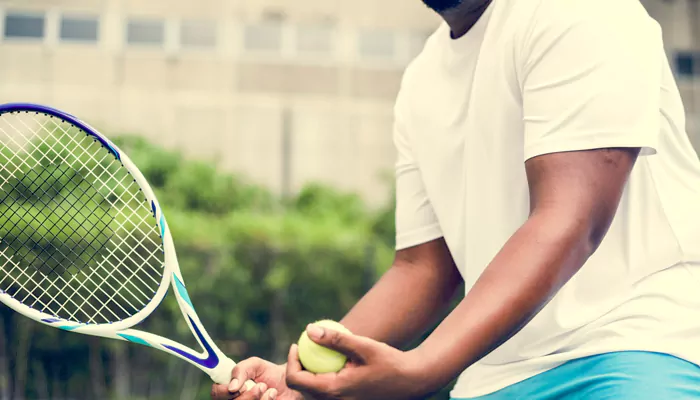First Serve – Here’s Everything You Need To Know About Taking Up Tennis
- Admin
- 1 year ago
- 4 minutes read

Tennis, a sport celebrated for its blend of finesse, strategy, and athleticism, has captivated enthusiasts around the globe for centuries.
From its origins on the manicured lawns of 19th-century England to the high-energy, professional courts of today, tennis offers a unique combination of physical challenge and mental stimulation. If you’re contemplating picking up a racket, you’re embarking on a journey that not only promotes physical health but also provides social and psychological benefits. Here's everything you need to know about taking up tennis, ensuring your foray into this esteemed sport is both enjoyable and rewarding.
Understanding the Basics
History and Evolution
Initially known as "lawn tennis," the sport has evolved significantly since its inception. Understanding its history, from Major Walter Clopton Wingfield's standardized rules to the modern game, can increase your appreciation and love for the sport.
Equipment Essentials
The basic gear includes a tennis racket, tennis balls, and appropriate footwear. Rackets vary in size, weight, and material, so it's crucial to choose one that complements your skill level and playing style. Comfortable, sturdy tennis shoes designed for lateral movement are also essential for injury prevention.
Understanding the Court
A standard tennis court measures 78 feet in length and 27 feet in width for singles matches. Familiarize yourself with the layout, including the baseline, service areas, and alleys, to better understand game play and strategy.
Getting Started
Learn the Rules
Before hitting the court, acquaint yourself with the fundamental rules of tennis. This includes scoring, serving, faults, and the distinctions between singles and doubles play. Knowing the rules enhances your playing experience and ensures fair play.
Mastering the Grip
The way you hold your racket is foundational to your game. The Continental, Eastern, and Western grips are the most common, each suitable for different strokes and styles. Experiment with these grips to find what works best for you.
Develop Your Strokes
The four primary strokes in tennis are the serve, forehand, backhand, and volley. Each stroke requires a unique technique, and mastering them is key to becoming a competent player. Start with basic drills and progress to more complex exercises as you improve.
Improving Your Game
Consistent Practice
Like any skill, proficiency in tennis comes with regular practice. Schedule consistent practice sessions, focusing on different aspects of your game each time. This could include serving accuracy one day and volley techniques the next.
Take Lessons

Whether you're a beginner or looking to refine your skills, taking lessons from a certified tennis coach can provide personalized guidance and accelerate your learning curve. A coach can also help correct bad habits before they become ingrained.
Conditioning and Fitness
Tennis is a physically demanding sport requiring endurance, strength, and agility. Incorporate fitness training into your routine, focusing on cardiovascular health, core strength, and flexibility. This not only improves your game but also reduces the risk of injury.
Engaging with the Community
Join a Club or Group
Joining a tennis club or community group can enhance your playing experience. Clubs offer structured opportunities to play, learn, and compete, regardless of your skill level. They also provide a social aspect, allowing you to connect with fellow tennis enthusiasts.
Participate in Tournaments
Once you feel confident in your abilities, participating in local tournaments can be a thrilling way to test your skills and meet players from diverse backgrounds. Competitions range from friendly, community-based tournaments to more competitive leagues.
Taking up tennis can be an incredibly rewarding journey that offers numerous benefits, both physically and mentally. It’s a sport that not only improves your physical health through cardiovascular exercise and increased agility but also challenges your mental acuity and strategic thinking.












